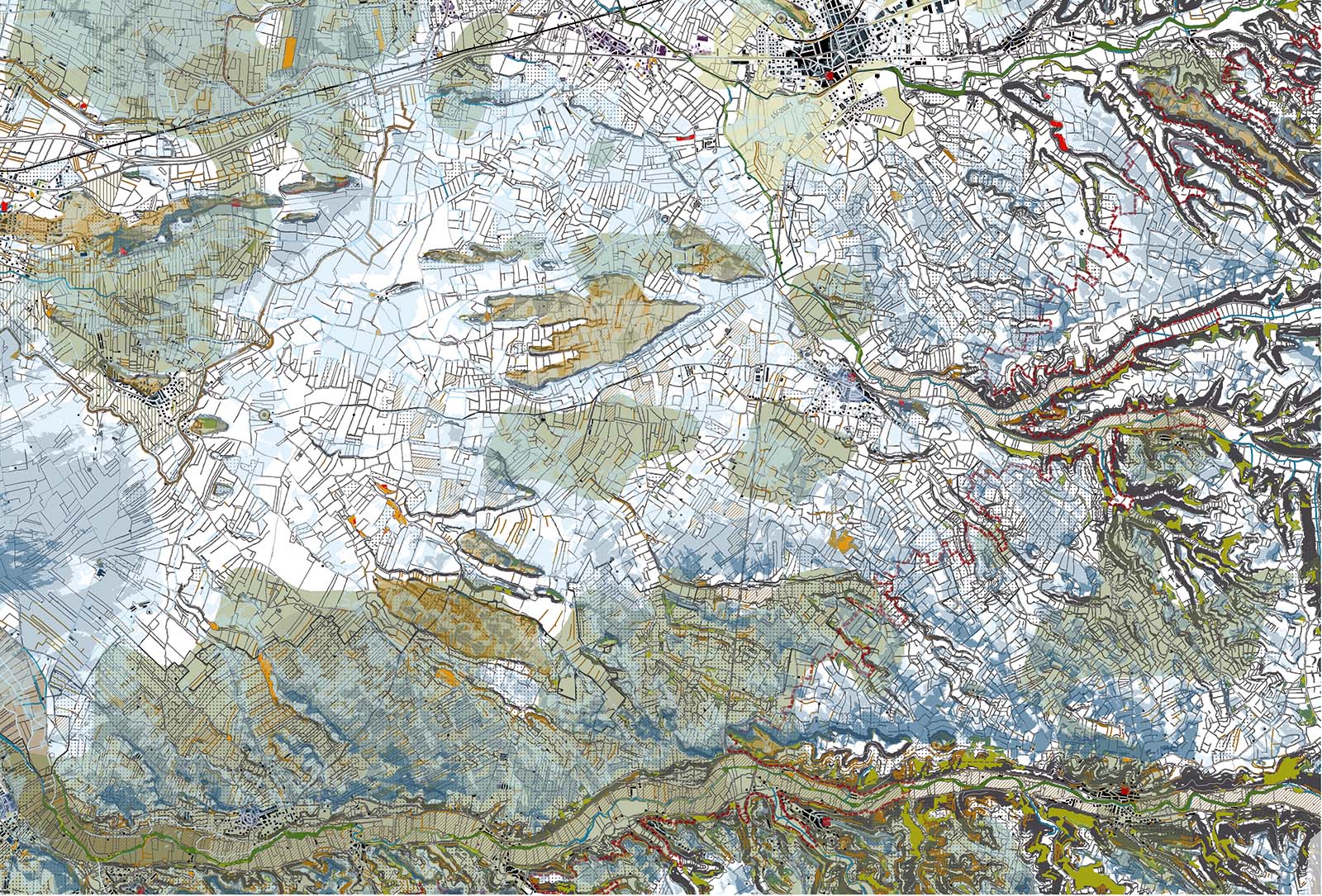Downloads
DOI:
https://doi.org/10.7480/spool.2016.1.1101Abstract
This paper argues that the opening up of landscape analysis to variables that exceed the 'tangible' or traditionally 'parameterized' values provides alternative access to the specificities of the landscape. In particular, the concept of 'atmosphere' as a particular dimension of the embodied experience, is proposed as an operative vehicle for the enrichment of the cartographic interpretation of the landscape. By placing the emphasis on atmosphere in terms of its causes, rather than its effects on our emotional sensibility, cartography enhances the identification of the particular by interpreting the specific manner that the properties of the landscape configure the experience. The paper is structured in two parts. The first part is a theoretical inquiry of the inter-subjective patterns of perception that define 'atmosphere', with the objective to bring the concept of atmosphere into the professional practice and discourse of landscape architecture through the agency of mapping. In the second part, the proposed approach to atmosphere is tested through a series of mappings of an agrarian, ordinary landscape, situated in Catalonia, Spain. The cartographic exercises point towards the identification of spatial patterns that potentially function as activators of atmospheres, as indicators for the presence of particular modes of landscape experience.
How to Cite
Published
License
Copyright (c) 2020 SPOOL

This work is licensed under a Creative Commons Attribution 4.0 International License.

References
Böhme, G. (1993). Atmosphere as the Fundamental Concept of a New Aesthetics. Thesis Eleven 1993: 36 (pp. 113).
Böhme, G. (2003). The Space of Bodily Presence and Space as a Medium of Representation. In M. Hard, A. Losch & D. Verdicchio (Eds.). (2003). Transforming Spaces. The Topological Turn in Technology studies. Retrieved from: http://www.ifs.tu-darmstadt.de/fileadmin/gradkoll/Publikationen/space-folder/pdf/Boehme.pdf
Böhme, G. (2013). The art of the stage set as a paradigm for an aesthetics of atmospheres. Ambiances [Enligne], Redécouvertes. Retrieved from :http://ambiances.revues.org/315
Council of Europe. (2000). European Landscape Convention, Florence (20.X.2000. ETS No. 176.). Strasbourg, France: Council of Europe.
Damasio, A.R. (1994). Descartes’ Error. New York, NY: G.P. Putnam’s Sons.
Gibson, J. J. (1986). The Ecological Approach to Visual Perception. London, United Kingdom: Lawrence Erlbaum Associates.
Harley, J., B. (1989). Deconstructing the Map. Cartographica, v. 26, n. 2, Spring 1989 (pp. 1-20).
Kaplan, R., & Kaplan, S. (1989). The experience of nature: A psychological perspective. New York, NY: Cambridge University Press.
Lakoff, G., & Johnson, M. (1980). Metaphors we live by. Chicago, IL: University of Chicago Press.
Nohl, W. (2001). Sustainable landscape use and aesthetic perception–preliminary reflections on future landscape aesthetics. Landscape and Urban Planning, 2001: 54, 1, (pp. 223-237).
Nogué i Font, J. & Sala i Martí, P. & Departament de Política Territorial i Obres Públiques (Eds.). (2010). Catàleg de paisatge. Les Terres de Lleida. Barcelona: Generalitat de Catalunya. Departament de Política Territorial i Obres Públiques. Retrieved from: http://www.catpaisatge.net/cat/documentacio_coedi_1.php
Norberg Schulz, C. (1980). Genius loci, towards a phenomenology of architecture. London, United Kingdom: Academy Editions.
Observatori del Paisatge, Generalitat de Catalunya. (2005). Prototipus de Catàleg de Paisatge, Bases conceptuals, metodològiques i procedimentals per a l’elaboració dels Catàlegs del Paisatge de Catalunya. Barcelona, Spain: Observatori del Paisatge.



